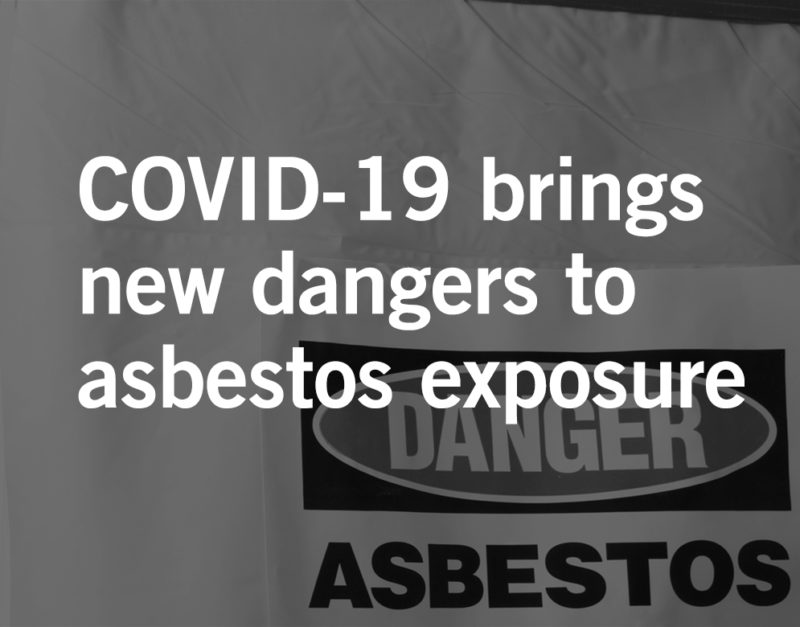 August 31, 2021
August 31, 2021 Since the COVID-19 pandemic began back in March 2020, “complete and fundamental change” has been the defining motto of many American lives. To protect public health and safety across the country, people have had to adapt and compromise in both their personal and professional lives. This adjustment is true for individuals who are especially at risk of contracting the virus. Common examples now known and cited regularly include the elderly, the immunocompromised, and those with preexisting lung diseases. Although we’ve come to accept these properties of COVID-19 as realities, there has been little to no coverage on vulnerable groups like New York City’s asbestos abatement workers or even communities prone to severe complications like those in Lincoln County, Montana.
Asbestos Removal Considered Essential Work
Asbestos abatement workers were deemed “essential” long before the pandemic. Anytime there’s construction, renovation, or retrofitting of any building, property owners in New York City are legally required to call abatement teams to remove asbestos. Amid the pandemic, however, some asbestos jobs have accelerated as several cities in the U.S. take advantage of closures of public spaces to make way for renovations. In particular, New York City has a lot more work to do on the asbestos front even after the pandemic. The Climate Mobilization Act, which passed in the spring of 2019, includes a mandate which requires the city’s largest buildings to reduce their overall emissions by 40 percent by 2030 and 80 percent by 2050. The city plans to install new windows, insulation, and other retrofits that yield energy efficiency to meet the requirements.
While it’s great news for cities that intend to go green, it’s not nearly as convenient for asbestos abatement workers, whose occupational risk makes them especially vulnerable to severe complications of COVID-19. Moreover, abatement teams tasked with removing asbestos will chance further asbestos exposure and potential lung damage with all the upcoming renovations.
In the United States, nearly 40,000 workers die each year from asbestos-related diseases. About 3,000 of these deaths are from mesothelioma — an aggressive form of cancer distinctively linked to asbestos exposure. What is so dangerous about abatement work is that no matter how low the level of asbestos exposure is, there is still significant risk of developing a disease like mesothelioma. With the risky nature of the work, companies often go out of their way to hire undocumented immigrants to undertake the labor – people who are often unlikely to file an asbestos lawsuit when something goes wrong.
COVID-19 Infects A Montana Town Already Sick with Mesothelioma
Like asbestos abatement workers in New York City, 61-year old Frank Fahland of Libby, Montana, has lungs already scarred by years of breathing in asbestos fibers that have contaminated the county’s dust and soil. The asbestos is a legacy of the infamous and shuttered W. R. Grace plant in the area that made vermiculite, a mineral used in insulation and gardening known to have traces of asbestos fibers. As someone living with an asbestos-related disease, Fahland’s condition makes him more vulnerable to complications from COVID-19. As such, he’s keeping his distance from people like his son and granddaughter in hopes of avoiding infection.
He’s not alone in taking such precautions against the virus. At least 400 people have died from asbestos-related diseases in Libby and Lincoln County, making it a town with one of the nation’s highest asbestos mortality rates. According to Miles Miller, a physician assistant at the Center for Asbestos Related Disease, at least 1 in 10 people in Libby have an asbestos-related disease.
The vermiculite mine, which closed in 1990, is primarily to blame. For decades, the mine constantly spewed asbestos-laden dust through the town, casually exposing residents to a known carcinogen. Journalist Andrew Schneider published a series of stories in 1999, finally revealing the extent of the public health disaster. Lawsuits began pouring in from across the nation, and by 2009 the EPA declared a public health emergency in Libby. Even today, people in the Montana town are still being diagnosed with asbestos-related diseases.
How We Help Victims of Asbestos Exposure
Seek justice with the help of our experienced asbestos attorneys. Our asbestos law firm has represented individuals like you affected by asbestos exposure for over 20 years, aggressively fighting the corporate giants responsible for their dangerous products. If you or a loved one were exposed to asbestos or suffer from a disease caused by asbestos like mesothelioma, we can help.


